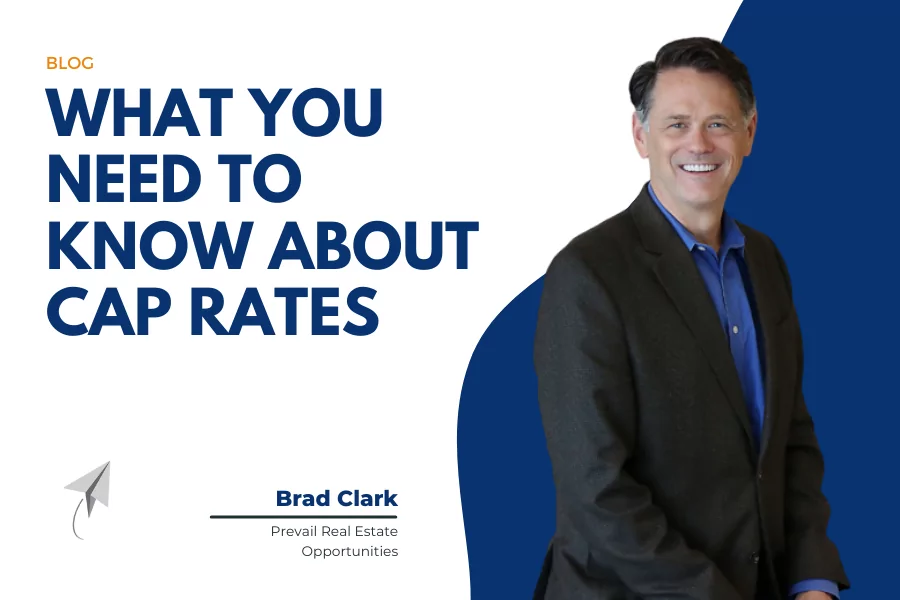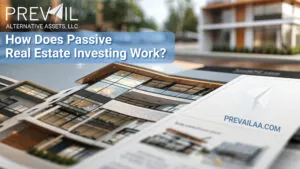Many investors are gravitating towards passive investments in real estate after dabbling in buying and running rental properties themselves. The transition from landlord to passive investors brings different challenges including an overwhelming number of new and complicated terms and calculations.
As you move further towards passive investing, your confidence in evaluating deal decks for each opportunity will grow. And to do that, you’ll expand your vocabulary and learn how uncomplicated passive real estate investing actually can be. So…
What the heck is a cap rate? Is a 7 cap better than a 6 cap? Cap rate compression, good or bad?
With today’s post, you’ll learn what cap rates are, how they are calculated, when you will want/need to use them, and what they tell you about an opportunity.
Cap Rates Defined
A ratio of the property’s income against the property’s market value gives you the capitalization rate or cap rate for short and is used to measure the expected rate of return generated by the property. The basic formula is pretty straightforward:
Cap Rate = Net Operating Income / Property Market Value
Net operating income or NOI for short divided by the property’s market value is the most popular way to calculate the cap rate.
A 7% Cap Rate example – Let’s assume a multi-family complex is priced at $1M that generated $100K in revenue last year with expenses of $30K, leaving NOI at $70K.
Take the NOI ($70K) and divide that by the sale price of $1M and arrive at 0.07 or 7% cap rate or 7 caps.
If we were to buy the property for $1M, we would expect $70K in NOI next year or generally a 7% return on our money. That also means it will take about 14 years to recoup your $1M initial investment without selling the property. To further illustrate, if they were selling the property for $1.2M it would deliver a 5.8% cap rate and take you 16 ½ years to recover your money. If they sold it for $875,000 it would be an 8% cap rate and would reduce the payoff time to 12.5 years.
What kind of cap rate should you look for?
Well, higher cap rates when you are buying means you are getting more income for a lower initial investment, and you’ll recoup your capital invested within a tighter timeframe.
A lower cap rate on purchases means you are paying more for the property’s NOI, and it will take longer for you to recoup your investment.
So, what is a “good” cap rate? It depends.
What is good in one market may be way overpriced in another. Other variables like potential market growth, competitive properties cap rates, property value vs NOI, accelerated depreciation through a cost segregation study, your desired cash flow should all be considered as well. We suggest comparing like property’s cap rates in the same target market to get a feel for the best apples-to-apples comparison.
How Should You Use Cap Rates?
Since the cap rate is a single measurement at one point in time, it should not be used as the exclusive yardstick on a deal. Some investors insist on 8+ cap rates for them to consider a deal, but because cap rates are based on today’s market value and NOI, don’t consider leverage or the time value of money, there are other metrics to consider as well.
Compare target market property cap rates – The best way to use a cap rate comparison is across several like properties in the same market. Let’s assume Atlanta is your target market for Class B apartment complexes. If you see one with a 6.2% cap rate, another at 6.5%, and a third at 6.8%, you know that all three are pretty comparable. You could dive into the details on the 6.5% property and feel pretty confident that you are on the right track with returns/pricing of area properties.
On the other hand, if there is a wide disparity of cap rates for like products in the same market, that could be a red flag. Dive into the details and see how the rates were calculated, if there is something wrong with the property or if it’s being valued incorrectly.
Possible risk can be indicated by cap rate – You can also use an average market cap rate to measure an asset class’s risk. Higher cap rate properties tend to be riskier in unstable areas with lower cap rates generally for lower risk properties in more stable regions.
Why should you care about cap rates?
Now that you know how to calculate a cap rate, have seen a few examples and how to use it to compare properties, what about cap rates really matter to you as a passive investor?
Well, cap rates are just one piece of the puzzle. There are many more important numbers and metrics to consider; the experience and integrity of the sponsor team, overall market trends, match your investing goals to name a few.
Really, only two items on cap rates should be front and center:
- Is the cap rate comparable to other properties in the area? Have confidence in the sponsor of the deal if they can answer this question that based on their homework, yes, the cap rate is in alignment with area properties.
- What is the cap rate assumption on sale? Sometimes referred to as the reversion cap rate, the sponsor has produced a pro forma with an assumed sale price based on a cap rate sometime in the future.
Here’s the most important point of this post.
When you are reviewing an opportunity, you want the exit cap rate on sale to ideally be the same or higher than the cap rate on a purchase. You want to see that the sponsor is assuming the market conditions on sale will be less favorable than the current market. Even after all the renovations, efficiencies increased, occupancy rate improved and rents raised, do the sponsors expect a relatively lower sales price relative to a higher NOI? This is indicative of conservative underwriting and hopefully, the deal will outperform those assumptions.
Could an exit cap rate be lower on sale? Sure, particularly if the property is a good deal and bought right at a higher than market cap rate. The sponsor should be able to explain their assumptions to get you comfortable.
Final takeaway
Quite a bit of math in this post, but what you need to retain is pretty simple.
Cap rates are just a single metric based on the NOI and value of the property. The rate will be different 6 months from now and likely dramatically different in a few years. You don’t need to be a math whiz; just remember the basics of cap rates and be aware of the entry cap rate vs the exit cap rate assumption when you are checking out a new deal.
For more information, contact Prevail today.


















